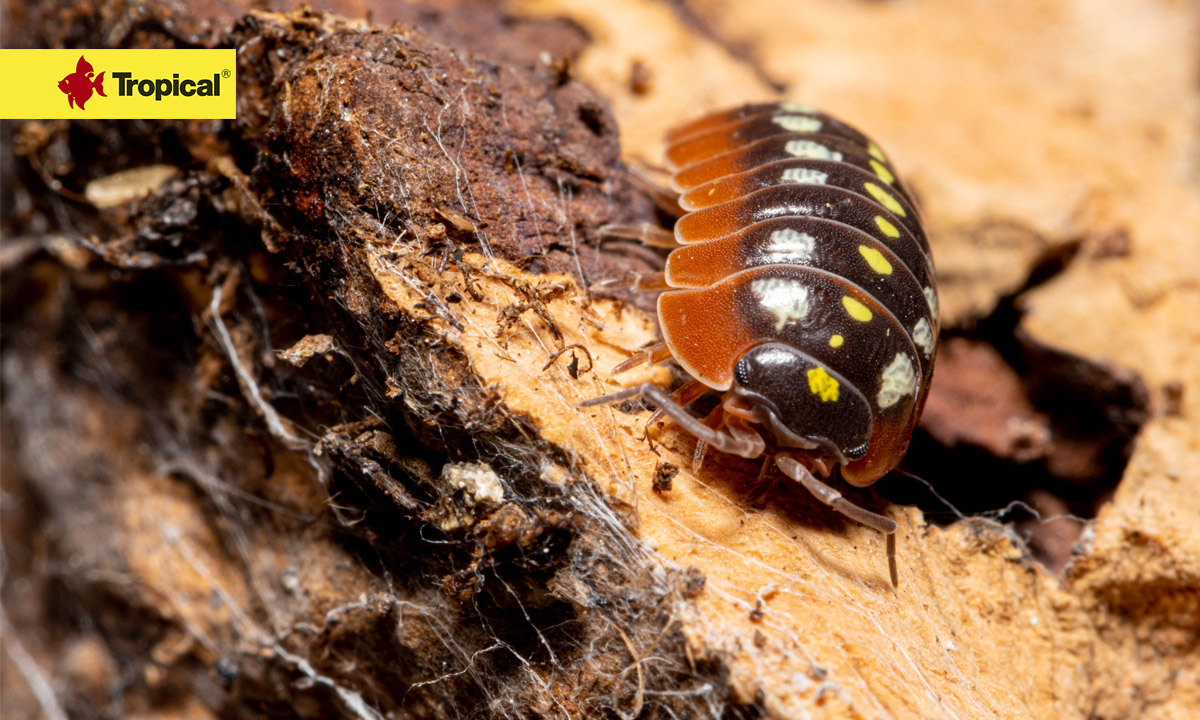Isopods – a perfect cleanup crew for terrarium
Isopods are small crustaceans that will make great pets for owners of smaller terraria. They are a fascinating object of observation, plus they are undemanding and easy to care for. However, to keep them healthy, it is necessary to provide them with the right environment and living conditions. Here are some tips to help you create the perfect terrarium for isopods.
Terrarium for isopods
These small crustaceans like moisture, so it is important to create a terrarium that provides it. For this purpose, use a coconut shell substrate, such as Tropical Bioterra or Tropical Cocochips. Remember regularly mist the terrarium, to keep a proper level of humidity. However, bear in mind that some species live in relatively dry climates, such as the Mediterranean. In their case misting does not need to be so frequent.

Although ispods sometimes feed on fungi, keeping them in damp conditions is not the best idea. Ensure adequate ventilation in the terrarium. This will help to keep isopods in good shape. For this you can cover the terrarium with mesh lid or a screen top with holes. It will allow air to circulate in the terrarium and at the same time prevent isopods from escaping. In general, glass aquariums or terrariums that don’t have sliding doors are better to prevent isopods from escaping. Breeders sometimes use modified plastic boxes as well.

The most commonly bred species of isopods are of tropical origin, so it is best to keep the temperature in the terrarium between 15-28°C. It is also important to monitor this temperature closely.
They do not eat healthy plants, so their habitat can be nicely decorated. Since most species spend much of their time burrowed underground, plants will be of secondary importance for them.
What to feed isopods with?
Isopods are omnivorous, so they will eat a variety of foods, including fruits, vegetables and decaying leaves. Remember to provide a water source in the terrarium, such as a water dish or misting system. In addition to fresh foods and leaves or bark, flake foods for fish are an excellent source of protein and other important nutrients for isopods. You can use Tropical Supervit, Tropical Super Spirulina Forte or Tropical 3-Algae Flakes. To provide your isopods with fiber, you can also use soaked tablets for herbivorous Loricariidae fish. Since isopods are heavily armored, they need an additional source of calcium in their diet. It is easiest to provide it in the form of a powdered supplement or a piece of cuttlefish bone.

Why a cleanup crew?
Isopods can adapt to a wide variety of situations, which is why some terrarists choose to introduce them into tanks with other scaly pets. They feed on leftovers, uneaten food and even feces, so they are ideal as a cleaning crew. In addition, they are so good at hiding that they can even live in terrariums with geckos.

As the number of species easily adapting to terrarium life is quite large, it is easy to become addicted to these unusual creatures. And it is not at all surprising to see breeding isopods has become so trendy. You can find them in local pet stores or at reptile (and other animal) shows.


How to take care of isopods?
Keep the terrarium clean. Regular cleaning is necessary to keep isopods healthy. Remove uneaten food and feces, and periodically clean the substrate.


By following these simple tips, you can create the perfect terrarium for isopods and keep them healthy and happy. Isopods are fascinating creatures and with the right care, they can thrive in a terrarium environment.










